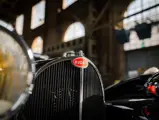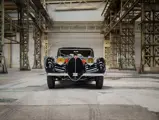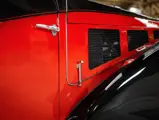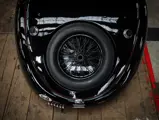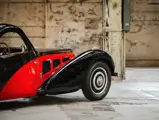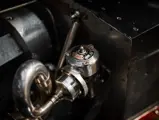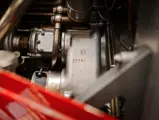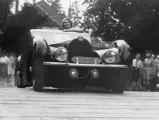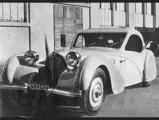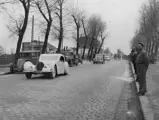
1936 Bugatti Type 57S Atalante
{{lr.item.text}}
CHF10,000,000 - CHF12,000,000 | Not Sold
{{bidding.lot.reserveStatusFormatted}}
- The first Bugatti Type 57S Atalante to leave the Molsheim factory
- One of only 17 Bugatti Atalante Coupés built on a 57S chassis
- One of the few Atalantes known to have competed in period
- Uprated to 200 horsepower supercharged “SC” specification
- In current ownership for almost three decades
- One of the finest Type 57S to come to market in recent years
From the featherweight Grand Prix Type 35 through to the indomitable Royale and devastatingly powerful Chiron, no manufacturer in history has so consistently pushed the boundaries of engineering and design as Bugatti. Nor has any marque been so inextricably linked with a reputation for both scintillating performance and timeless style. Built with the precision to rival the finest Swiss watch and the style to match the leading couture design houses of Paris, few cars in Bugatti’s back catalogue exemplify these qualities quite so effortlessly as the sublime Type 57S.
Introduced at the Paris Auto Salon in 1936, just a year after the jaw-dropping Aérolithe stunned showgoers in the French capital, the Type 57S built on the success of Jean Bugatti’s first solo project. Featuring a completely reengineered Surbaissé chassis that was both more compact and lower than that of the Type 57, the rakish machine featured a front axle that articulated in two halves and a rear axle that passed through—rather than over—the chassis frame. Power, meanwhile, came via an improved version of the Type 57’s 3.3-litre dual overhead cam straight-eight engine, with a revised dry-sump lubrication system influenced by the racing Type 59.
Echoing the ground-breaking styling of the Aérolithe and the handful of impossibly pretty Atlantics that followed, the Atalante represented one of the most desirable expressions of Jean Bugatti’s vision, with an aerodynamic design that used similar radiuses through the body shape to create an unforgettable silhouette that is unmistakably Bugatti. In total, just 17 examples of these hugely collectible coupés were produced, making surviving examples some of the most sought-after automobiles ever created.
Chassis 57384 is one of the most significant of these special cars, being the first of the small cohort to leave the Molsheim factory and fitted with the first "S" specification engine. Ordered by Marcel-Louis Bertrand on 29 December 1935 to replace a Type 57 in which he had crashed, the third Atalante in sequence leapfrogged two early cars to become the first Type 57S to leave the works after it was completed on 27 August 1936. The white and blue Bugatti joined its first owner in Toulon, France two days later, after being delivered via Marseille concessionaire Gaston Descollas. Originally specified with a roll-back sliding roof, it is thought to have soon been fitted with a smoked plastic transparent roof.
Just six months after leaving the factory, chassis 57384 was loaned to Claire Descollas—wife of Gaston—to participate in the 9th Concours International de Tourisme Automobile Fémenin Paris-Vichy-St Raphaël held from 17-21 March 1937; as the only international rally for female participants it was widely reported in the French press and this 57S was featured in Le Figaro. Descollas was a pre-rally favourite and ran a solid 4th overall in the speed tests before retiring from the rally not far from Orange. The talented racer would later go on to capture 10 world speed and endurance records aboard a Ford flathead V-8-powered Matford as part of an all-female crew that included Hellé Nice. It is notable that the original “shell” headlamps had, even at this early stage, been replaced by the more attractive Scintilla “bowl” headlamps that would grace Type 57Ss after the October 1936 Motor Show, and it is thought that, not long after, the colour was changed to a more appealing two-tone black and red, along with fitment of tubular-style bumpers to echo those of 57373S.
Following its brief dalliance with competition, the Type 57S was sent into hiding at the outbreak of war in Europe, spending the conflict buried beneath piles of wood in a barn belonging to the owner’s uncle. Undiscovered during that time, it is reported that the Bugatti started easily with a fresh battery once hostilities ceased and it was reunited with its first owner.
After more than a decade of dedicated stewardship, chassis 57384 was offered for sale via Parisian agent Dominique Lamberjack, before being bought by Antoine Tripier in August 1947. The serial Bugatti owner soon exhibited the car, taking first prize at the 1947 Beaune Concours d’Elegance, and proceeded to use the Type 57S as his everyday transport. But, faced with persistent problems with the starter and a lack of suitable mechanics in his native Côte d'Or, he decided to sell.
In 1951, the streamlined sports car crossed the Atlantic to its next owner, Dr Samuel Scher, following a sale facilitated by Lamberjack. Little is known of the Bugatti’s time in North America save for an appearance in the August 1954 edition of Road & Track, where it was advertised by Bill Frick Motors for the sum of $4,500. The car eventually returned to Europe before being offered for sale by Belgian car dealer Johnny Thuysbaert, after which it was bought in 1971 by Michel Poberejsky, a successful sports car racer better known to timekeepers as Mike Sparken.
Partially dismantled and sitting in the English workshop of Paul Ridgefield, chassis 57384 is reported to have been in sound condition but in need of restoration, with its well-preserved bodywork finished in primer, its engine disassembled—though missing its sump—and the dashboard suffering the effects of a minor fire. Ridgefield was commissioned to carry out the restoration, during which the small, embedded headlamps were replaced with more attractive wing-mounted units, in keeping with how it left the factory.
The mechanical restoration required several parts contributed by the former Montlhéry record-setting Galibier saloon, chassis 57421, which Poberejsky acquired from a seller in the United States in 1971. In addition to the front axle with hydraulic brakes, the starter, and dynamo, the car’s 58C engine block was appropriated and modified to accept the 57S’s cooling fan and 14 mm spark plugs before being mated to the original 1S upper case. Five new lower crankcases were then cast using an original from chassis 57542, one of which is fitted and the other four sold, while the donor car’s gearbox was also used. Crucially, the saloon’s Roots-type supercharger allowed for the upgrade to the highly desirable 200 horsepower “SC” specification that the Type 57S retains today.
Following completion of the restoration in late 1972, Poberejsky drove the Bugatti with enthusiasm, the lithe black and red tourer becoming a regular sight flashing along the roads of Cap Ferrat until 1990, when it was sold to a Swiss national living in Monaco; for facilitating the sale, Henri Lalanne was given the original 1S gearbox. The car would find another new home just three years later, this time with the consignor, a long-time Bugatti enthusiast whose father had, by chance, owned sister car—chassis 57383—in 1948. Dutch marque specialist Simon Klopper was then commissioned to carry out a restoration, which included straightening of the chassis and an overhaul of the mechanical components, while retaining the original carpet and leather upholstery. The roll-back sliding roof, meanwhile, is believed to be the only of its type still in operation.
Owned for almost three decades, chassis 57384 has been regularly shared with the public at the world’s leading concours events. In 2003, the Atalante was part of an historic gathering of Molsheim greats at the Pebble Beach Concours d’Elegance, where the car was recognised with the Prix du Design trophy. It would also collect silverware at the Louis-Vuitton Classic a year later. In addition to attending the Festival Bugatti in Molsheim in 2009 and 2014, in 2016, the consignor had the honour of delivering a wreath to the Bugatti family grave, prior to chassis 57384 being awarded the Safran prize.
A hugely significant model in the history of the one of the world’s greatest marques, the Type 57S Atalante is for many the embodiment of the Bugatti legend. Chassis 57384 presents an exceptionally rare opportunity to join the ranks of a select group of owners, united through the decades by their appreciation of the model’s enduring engineering genius and timeless fashion.




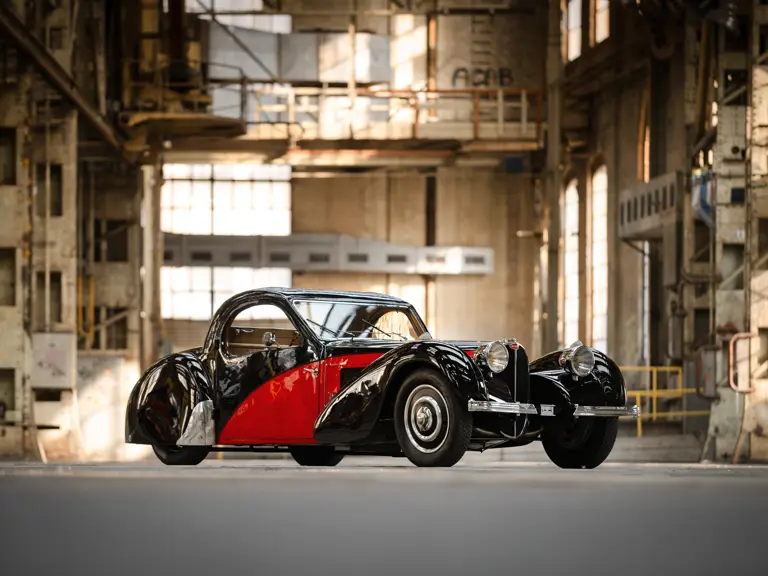






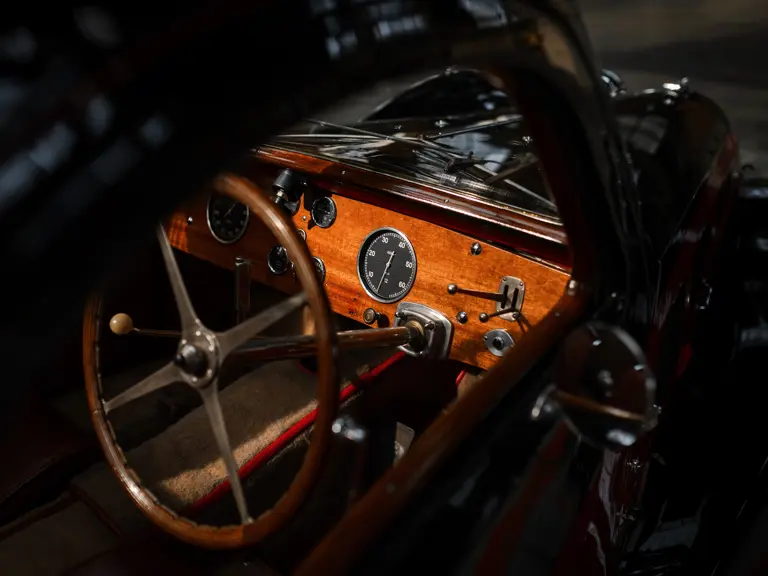

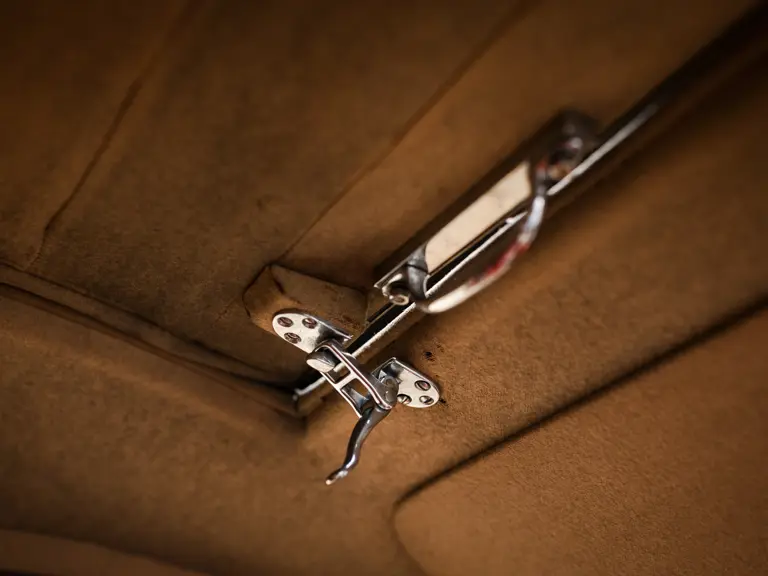






















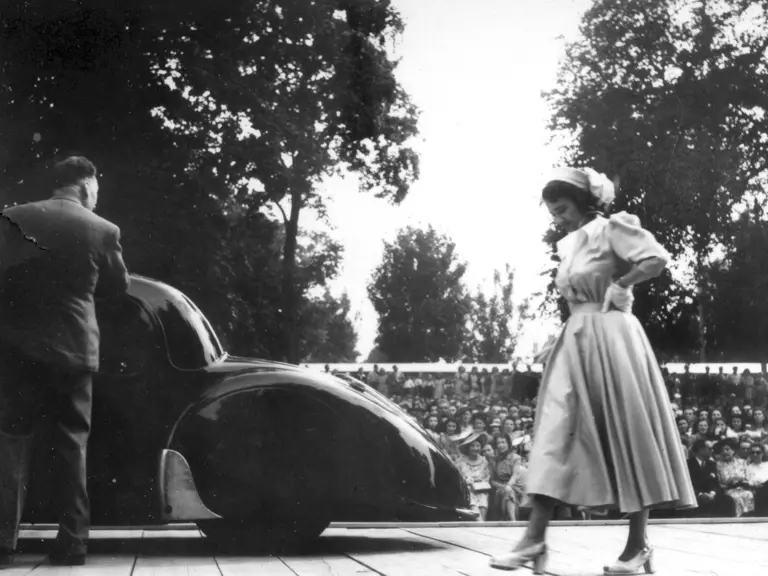












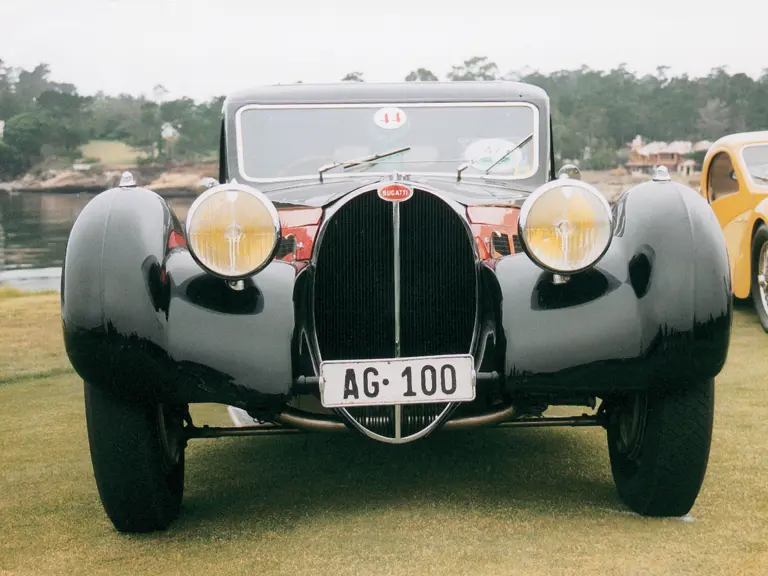

 | St. Moritz, Switzerland
| St. Moritz, Switzerland



